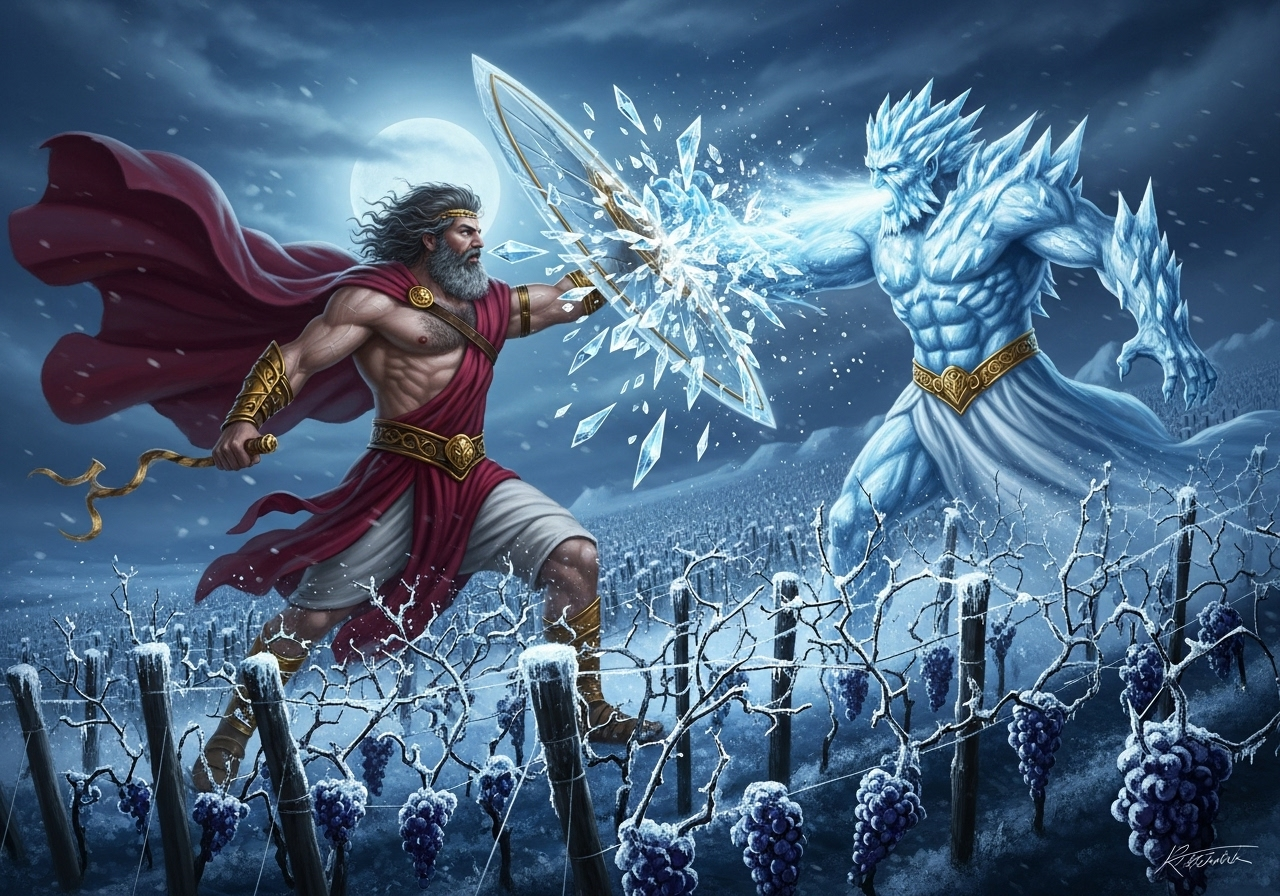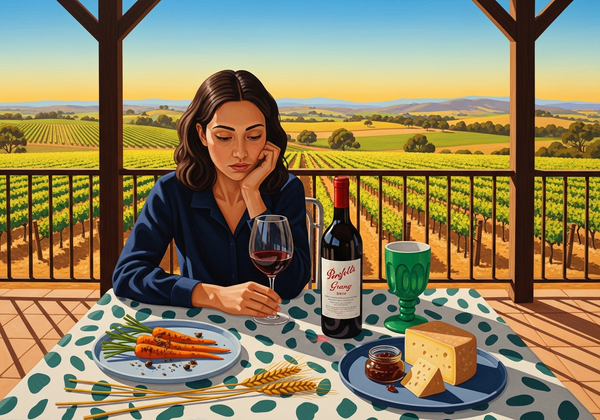Cristal 2012: The Diamond Shield of Reims

Born from a clash of gods, this biodynamic Champagne brandishes 97-point brilliance and blue-chip liquidity for the bold investor.
The Battle on the Chalk Ramparts
In the brutal winter of 2012, the Ice Titan Gelumar rose from the Marne, intent on freezing every vine from Avize to Ay. I - Bacchus - met him on the chalk cliffs above Reims, wielding a translucent shield forged from river-ice and starlight. Each time his blizzard breath struck, my shield refracted the blast into a million diamond sparks that settled over Louis Roederer’s vineyards. Morning revealed grapes sheathed in crystalline frost, perfectly preserved. From that enchanted harvest came Cristal 2012, the first vintage crafted entirely from biodynamic estate fruit - 60% Pinot Noir, 40% Chardonnay, bottled in its signature clear glass to honor that diamond shield.
Current Market Orbit
Cristal 2012 trades around $368 on Liv-ex, roughly fifteen percent above its 2020 level yet still below the $420 peak reached during 2022’s luxury bubble. Global retail averages hover near $400, with U.S. shelves touching $430. Auction momentum remains healthy: a four-bottle lot at Sotheby’s hammered at $1,500 this spring, equating to $375 per bottle after fees - evidence of dependable, if disciplined, demand.
Why the Shield Still Gleams
Critics draped the wine in 97–98-point armor, praising its candied-citrus nose, chalk-dust core and razor-edged acidity. It is also Roederer’s historic turning point: the first Cristal from fully organic and biodynamic parcels, a narrative collectors love. Production is lavish by Burgundy standards yet far smaller than Dom Pérignon, ensuring genuine scarcity when global gifting season ignites. Over the last five years the wine has delivered a 3% compound annual growth rate with sub-100% volatility - meaning it behaves more like a steady blue-chip than a speculative rocket.
Cracks in the Crystal
Short-term forecasts are less celestial. Analysts expect Champagne to tread water, with Cristal potentially easing ten percent by 2027 as luxury demand cools. The wine’s clear glass, though iconic, is a UV magnet: bottles must sleep in absolute darkness or risk premature fatigue. Counterfeits have surfaced in grey-market Asia, distinguished only by duller glass clarity, so provenance must be forensic. Finally, Champagne’s overall index slipped 4.5% in 2024; another macro wobble could drag Cristal with it.
Portfolio Positioning - Raising a New Standard
Perhaps your cellar already houses Dom Pérignon 2012. Cristal 2012 complements it stylistically - more mineral tension versus Dom’s broader fruit - and financially, sitting about $90 higher per bottle. Acquiring six to twelve bottles (two to three percent of a $200k portfolio) provides Champagne diversification without overweighting fizz. The entry window to watch: sub-$350, likely during year-end distributor clear-outs. Store at 50–52°F in complete darkness; the Ice Titan’s chill lives on in the wine’s taut core, but light is its only kryptonite. Expect peak drinking and optimal resale traction between 2030 and 2040 as tertiary almond and truffle tones emerge.
Bacchus’s Verdict
Cristal 2012 is my diamond shield captured in glass - radiant, resilient and tradeable with a keystroke. Secure a modest cache, guard it from light, and when the next frost threatens your fortunes, uncork a bottle and remember how starlight beat the blizzard.





